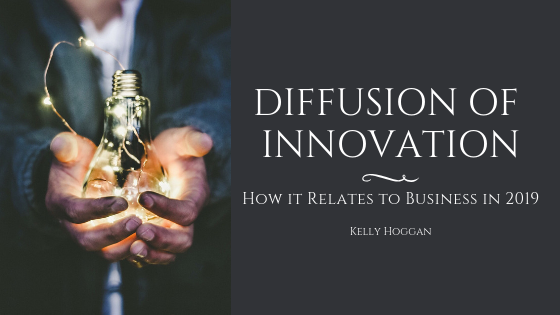In a competitive marketplace, it can be challenging to have your product or service stand out from the rest. Even the most strategic marketing efforts often struggle to meet the demand and interest from target audiences. Diffusion of innovation is a theory that was developed in 1962 by a sociologist, E.M. Rogers, to explain how consumers adopt new products, services, and technology. It is beneficial for all businesses to consider this theory when launching a new product, as it helps breakdown how consumers respond to new trends. Utilizing diffusion of innovation will help businesses in 2019 determine how consumers are adopting and engaging with new technology and product. Additionally, it will help determine the trajectory and the progression of new innovative trends. Here is what to know about the diffusion of innovation theory, and how you can relate it to your business this year.
First, it’s important to note that every commercial industry has different types of consumers. These consumers respond to innovation differently, placing them in various categories. Diffusion of innovation helps businesses understand these categories, and explains how new products disperse throughout the marketplace in waves of consumer acceptance. Consumers are referred to as adopters in this theory, and fall into the following adopter categories:
The Innovators
The first people to respond to new technology or products are the innovators. While they only make up 2.5 percent of the adopters, they are essential to the process of launching a new product. Innovators are the people who always want to try something new.
The Early Adopters
They want to try something new but don’t want to be the first to volunteer. The early adopters are the consumers who most often react positively to a new product, but also provide constructive criticism for improvements. They makeup 13.5 percent of adopters and are happy to share their thoughts about the product with others.
The Early Majority
Success stories, free samples, and case studies are the name of the game for the early majority adopters. The 34 percent of individuals that fall into this category of consumers don’t like to take risks, and as such, need a little convincing before they try something new. Engagement is critical for these consumers.
The Late Majority
The 34 percent that makes up the late majority consumer are not open to change, and often have many concerns with accepting something new. They’ll need a lot of proof that a product or service works and is worth their time. Once they are convinced that enough people have tried the product and spoke highly of it, the late majority will join in.
The Laggards
The last to adopt are the laggards. They make up 16 percent of the adopters and require the most evidence that a product is beneficial and trustworthy. Traditional communication works best for this group, along with testimonials, data, and statistics.
Before a product has been fully integrated into a society, it has been diffused through each of the above categories. Understanding how consumers will engage with your product or service is a key element to leading your business towards success in 2019.
